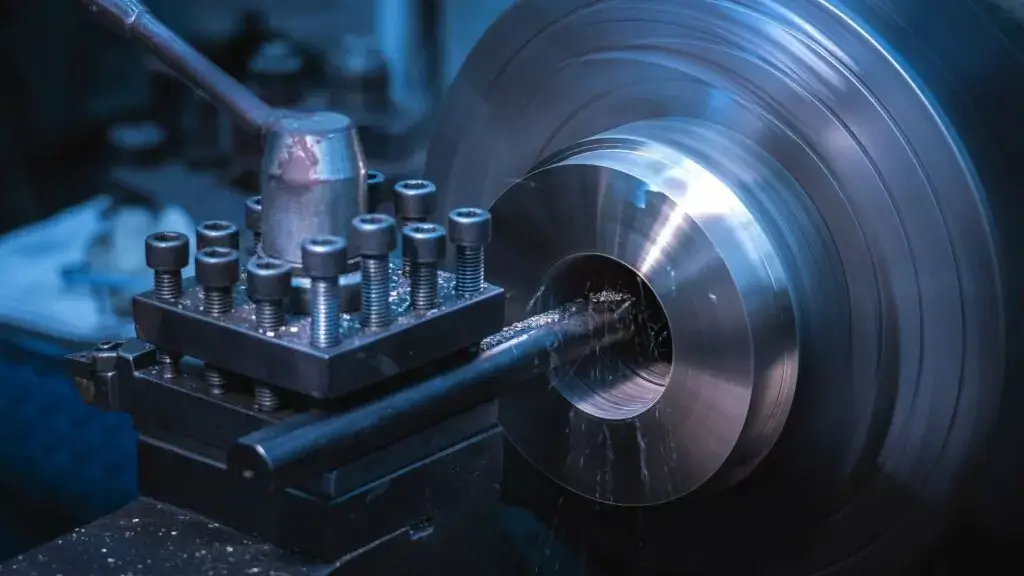All About Stainless Steel CNC Machining
Stainless steel is one of the most common materials for machining. All machining near me has used stainless steel materials for machining.Jensen Precision Machining is a specialist in short and long run production machining with extensive experience in milling, turning and Swiss machining.
Stainless steel CNC machining is not as easy as wood. Stainless steel has high hardness and tensile strength. Therefore, machining stainless steel requires an understanding of the different metalworking processes available for this material.
This article will discuss the different grades of stainless steel and how to machine them. This article will also provide some tips to make stainless steel CNC machining the easiest metalworking process.
1.What is stainless steel?
Stainless steel is an alloy of iron and chromium. Other elements such as carbon can also be added to obtain some special properties. The chromium content is at least 11%.
Iron has excellent physical properties such as strength and durability. However, it corrodes and wears easily. Adding chromium to iron enhances its ability to resist corrosion and wear.
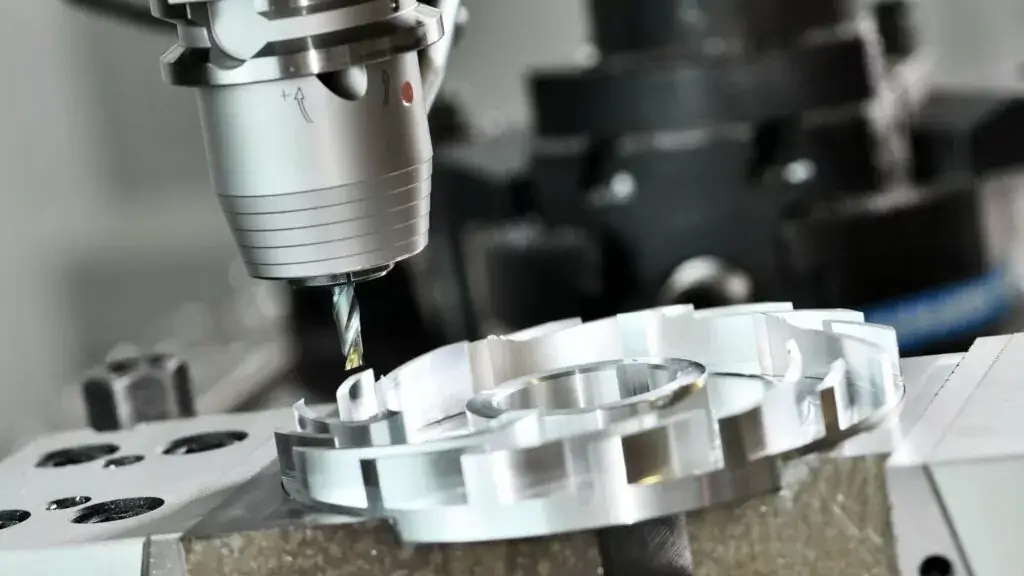
2.Can stainless steel be machined?
Yes, stainless steel can be machined. In fact, there are many different ways to CNC machine stainless steel. Once you understand the characteristics of stainless steel and the correct machining methods, machining stainless steel becomes very easy.
3.Types of stainless steel
Stainless steel is a large category of many materials. Many people think that stainless steel is a special alloy, which is wrong. There are more than 150 grades of stainless steel. These different stainless steels are further divided into different categories.
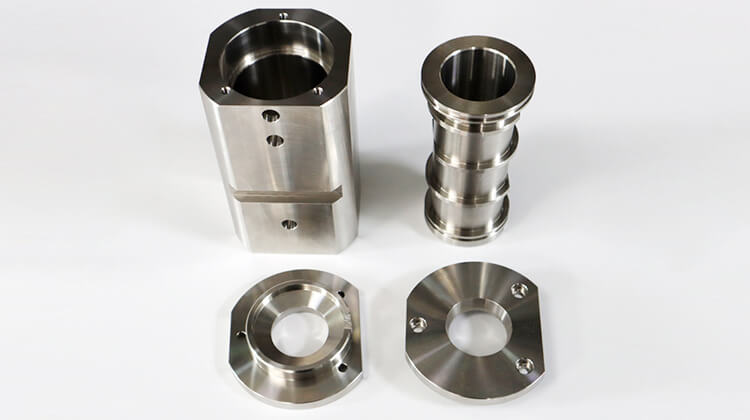
Let’s explore the five categories of stainless steel one by one:
1) Austenitic Stainless Steel
Austenitic stainless steels are the most popular variety of all stainless steels. These steels get their name because they have an austenitic structure. Austenitic stainless steels are non-magnetic in nature. Moreover, they cannot be hardened by heat treatment. These properties come from elements such as nickel, manganese, and nitrogen.
Austenitic stainless steels are divided into two subcategories: AISI 200 and AISI 300. Sometimes, molybdenum is added to these steels to improve corrosion resistance.
① Examples of Austenitic Stainless Steel
- Type 304
- Type 316
- Alloy 20 (Carpenter 20)
- Type 321H
- Type 309S
② Properties of Austenitic Stainless Steel
- Corrosion resistance: Very high
- Heat treatable: No
- Magnetic properties: Non-magnetic
- Toughness: Very high
- Ductility: Very high
- Weldability: High
- Chromium content: Average 18%
- Nickel content: Typically 8% to 12%
- Molybdenum content: 2% to 7%
- Carbon content: Less than 0.1%
- Stress corrosion cracking: Low resistance
③ Applications of Austenitic Stainless Steel
- 200 grade stainless steel is used in household products such as washing machines, cars, buildings, water tanks and dishwashers.
- 300 grade stainless steel is used to make aerospace parts, pharmaceutical products, mining industry tools, cutlery and storage equipment.
2) Ferritic stainless steel
Ferritic stainless steels were discovered very early in history (1912). But it was not until the 1980s that they became widely used. Ferritic stainless steels belong to the AISI 400 series.
Ferritic stainless steels are not superior to other steel grades in terms of physical properties. However, they have excellent qualities in terms of magnetic properties and chemical resistance. The advantage of ferritic steels lies in their resistance to stress corrosion cracking.
① Examples of Ferritic Stainless Steel
1.405 Type
2.409L Type
3.410L Type
4.430 Type
5.439 Type
6.447 Type
② Properties of Ferritic Stainless Steel
- Corrosion resistance: Very high
- Heat treatable: No
- Magnetic properties: Magnetic
- Toughness: Medium
- Ductility: Medium
- Weldability: Low
- Chromium content: 10.5%~30%
- Nickel content: Usually nickel-free
- Molybdenum content: Usually 1% to 2%
- Carbon content: Less than 0.08%
- Stress corrosion cracking: High resistance
③ Applications of Ferritic Stainless Steel
Ferritic stainless steel can be used to make kitchenware, automotive parts, and industrial tools.
3) Martensitic stainless steel
Martensitic stainless steel is named after Adolf Martens. These steels are known for their extremely high hardness. These steels are aged and heat treated to achieve high hardness and tempering. Martensitic stainless steels can be of high carbon quality or low carbon quality.
①Examples of Martensitic Stainless Steel
1.X12Cr13
2.X20Cr30
3.X50CrMoV15
4.X17CrNi16-2
②Performance of Martensitic Stainless Steel
1.Corrosion resistance: high
2.Heat treatable: yes
3.Magnetism: mostly magnetic, some non-magnetic
4.Toughness: lower toughness when not tempered, higher toughness when tempered
5.Ductility: high
6.Weldability: high
7.Chromium content: 12% to 17%
8.Nickel content: usually nickel-free, sometimes 2% to 4%
9.Molybdenum content: 0 to 1%
10.Carbon content: 0.1%~1.2%
11.Stress corrosion cracking: poor resistance
③Applications of Martensitic Stainless Steel
1.Martensitic steel is used for surgical instruments, dental equipment, door beams, bumpers, guns, cutlery, and ball bearings.
4) Duplex Stainless Steel
Duplex stainless steel has two structural components in design. Duplex alloys are a combination of austenitic stainless steel and ferritic stainless steel. Duplex stainless steel improves the quality of both constituent structural elements.
There are three grades of duplex stainless steel: standard duplex, super duplex, and lean duplex alloys.
①Examples of duplex stainless steel
1.X2CrNiN22-2
2.X2CrCuNiN23-2-2
3.X2CrNiMoSi18-5-3
4.X2CrMnNiMoN21-5-3
5.X2CrNiMoCuN25-6-3
6.X2CrNiCuN23-4
②Performance of duplex stainless steel
1.Corrosion resistance: good to very high
2.Heat treatable: yes
3.Magnetic properties: magnetic due to the presence of ferrite structure
4.Toughness: high
5.Ductility: medium to high
6.Welding ability: strong welding ability when containing nitrogen
7.Chromium content: 18% to 30%
8.Nickel content: 1% to 9.5%
9.Molybdenum content: 0.1% to 5%
- Carbon content: None
- Stress corrosion cracking: Very high resistance
③ Applications of duplex stainless steel
Duplex stainless steel is used in heat exchangers, tubes, shells, towers, condensers, reactors, piping systems and other commercial equipment.
5) Precipitation hardening stainless steel
Precipitation hardening stainless steel is also called PH stainless steel alloy. Small amounts of elements such as titanium, copper, phosphorus or aluminum are added to these alloys. After the alloy is formed, these steels are subjected to an age hardening treatment. The yield strength of precipitation hardened stainless steel is 3-4 times that of austenitic stainless steel.
① Precipitation hardening stainless steel example
17-4 PH steel
② Properties of precipitation hardening stainless steel
- The properties of PH hardened steel vary greatly and require special treatment to obtain the desired results.
③ Applications of precipitation hardening stainless steel
PH hardened steel is suitable for applications with extremely high strength requirements. Common examples are marine construction, aircraft, nuclear power plants and chemical industries.
4.Stainless steel CNC machining process
Stainless steel can undergo a range of different machining processes. Some of these processes include:
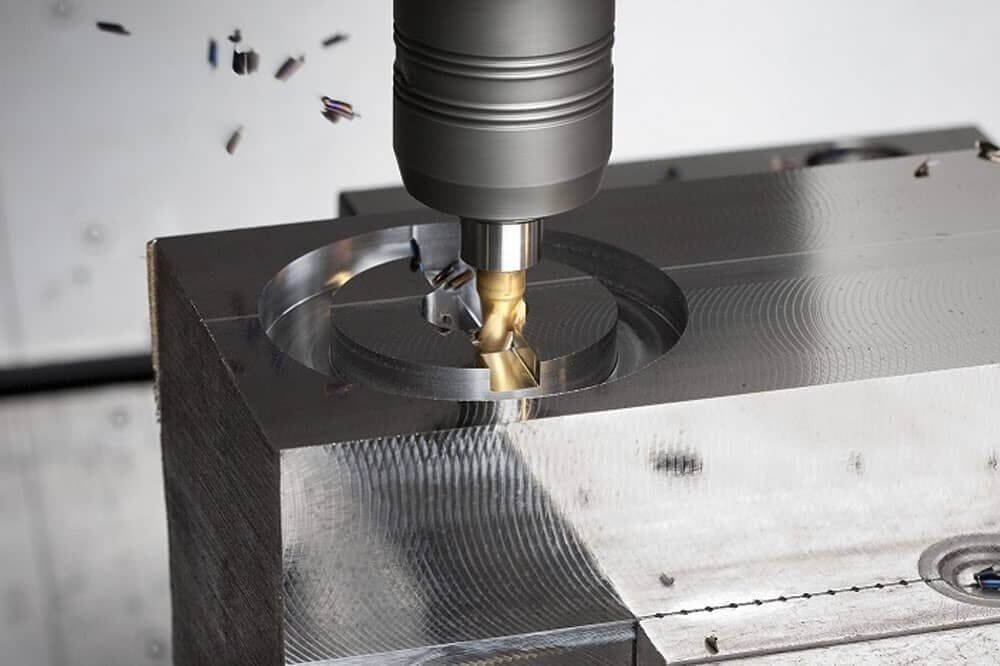
1) Milling
Milling is the most common primary stainless steel CNC machining process. It uses a cutting tool that rotates at high speed to machine a fixed workpiece.
When using a milling machine to machine stainless steel alloys, it is important to select the right tool. The wrong tool or high speed will cause the tool to wear quickly. Milling stainless steel has very high precision and smooth cutting edges.
2) Turning
Turning requires a fixed cutting tool and a rotating workpiece. The tool makes physical contact with the rotating workpiece to remove material.
Turning is a common process for machining austenitic stainless steel. When machining stainless steel, it is important to keep the tool overhang to a minimum.
3) Drilling
Drilling is a secondary machining process used in conjunction with other metalworking techniques. Drilling is done to create holes in a metal workpiece. Stainless steel drilling is done for screw holes, secondary assembly, or aesthetics.
4) Threading
Threading is used to install screws and fasteners on steel components. The threads can be inside the hole or outside the workpiece. Stainless steel threading is often used on pipes and tubing.
5) Laser Cutting
Laser cutting uses an amplified beam to melt and remove stainless steel. This method is suitable only for thin stainless steel sheets. It is better than carbide tools because tool wear does not occur. However, it is very expensive and requires highly skilled labor.
6) Grinding
Grinding is done to improve the surface finish of stainless steel. It can also make the workpiece more precise by removing small amounts of material. Grinding rubs the grinding wheel against the stainless steel workpiece.
The process can also remove burrs from welding. Grinding helps to create a smooth cutting edge on stainless steel parts.
7) EDM (Electrical Discharge Machining)
Electrical discharge machining (EDM) uses electric pulses to melt the metal. The electric pulses have very high voltage and frequency. The process is limited in terms of the thickness of stainless steel that can be cut.
8) Waterjet Cutting
Waterjet cutting uses the power of high-pressure water to erode and cut the material. The process can cut thick stainless steel sheets. However, if the corrosion resistance of a particular stainless steel grade is low, waterjet cutting may have an adverse effect.
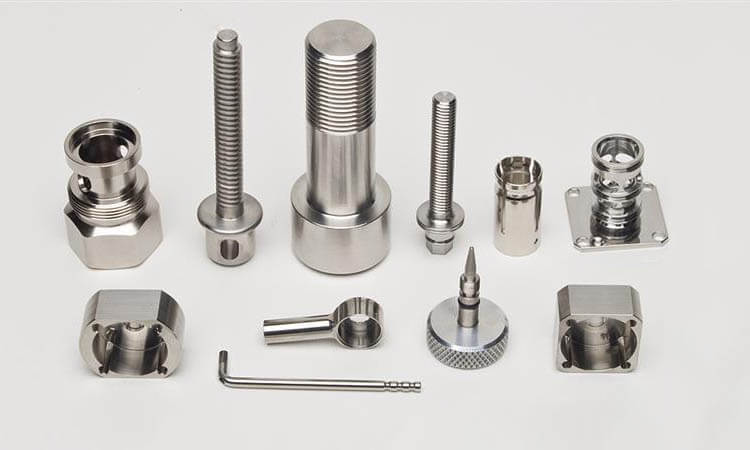
5.Is stainless steel difficult to machine?
Stainless steel may encounter some difficulties during machining. These difficulties are common to most machining processes. However, problems during stainless steel CNC machining can be avoided by taking certain precautions.
The main problem arises due to overheating of the steel surface. Overheating is a problem encountered in any machining process. For stainless steel alloys, overheating can compromise the corrosion resistance of the material.
However, overheating can be avoided by monitoring the workpiece. Stainless steel will show a tinted color on the surface when heated.
This thermal reaction is associated with the pickling process. Pickling involves treating stainless steel with hydrochloric acid or sulfuric acid. The acid dissolves the oxide layer on the steel, restoring the corrosion resistance of the alloy.
6.Problems in CNC Machining of Stainless Steel
Some minor difficulties that arise in CNC machining of stainless steel include:
- Stainless steel causes severe tool wear and shortens tool life.
- A lot of force is required to provide the desired results.
- Stainless steel machining operations have poor chip control.
- Some stainless steel grades have extremely high hardness.
7.Which stainless steels are difficult to machine?
Every steel will cause some degree of trouble during machining. However, some steels are more problematic in this regard than others. Here are some difficult steels and the troubles they cause:
1) High Carbon Steel
High carbon steels are difficult to machine due to their extremely high strength and hardness. In addition, these steels contain carbide grade materials. These factors can wear out tools quickly.
2) Low Carbon Steel
Low carbon alloys are also difficult to machine. This is because of the high hardness of these steels. The hardness causes steel chips to adhere to the cutting tool. This also shortens tool life.
3) 316 Stainless Steel
316 Stainless Steel has the lowest machinability rating. It requires specialized cutting tools to machine it. Therefore, 316 Stainless Steel is used to make parts when there is no other choice.
4) 304 Stainless Steel
The problem with 304 Stainless Steel is work hardening. 304 exhibits the characteristics of rapid work hardening during machining. This problem can be solved by adding sulfur to the workpiece.
Among them, 416 Stainless Steel is the easiest to machine. In reality, 400 series stainless steel is fairly easy to machine. On the other hand, 300 series stainless steel is more difficult to machine.
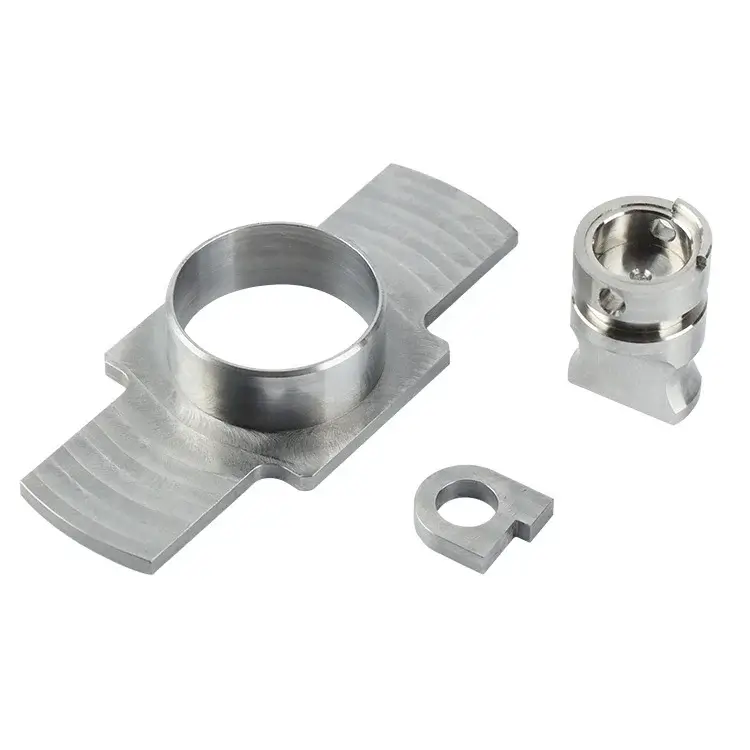
8.Tips to Simplify Stainless Steel CNC Machining
Stainless steel CNC machining can be simplified by adopting the following tips:
1) Select High-Quality Materials
Use the highest quality workpiece material for the smoothest operation. Stainless steel comes in many grades. Each grade has a variety of quality options. Spending a little more early on can help save a lot of costs and the hassle of tool breakage.
2) Work Hardening
Work hardening is the phenomenon of stainless steel becoming hardened during machining. This occurs due to plastic deformation of the stainless steel. Work hardening greatly increases the difficulty of stainless steel CNC machining. However, hardening can be reduced by delivering coolant to the cutting tool.
3) Rigid Tools
The tool connection and machine tool setup should be very tight. Any tool chatter will be amplified and result in poor machining. In addition, the machine bed should not have excessive vibrations after the workpiece is mounted.
4) Tool Materials
Choosing the right tool material is essential to achieving high-quality results. Two common choices for making tools are carbide and high-speed steel.
High-speed steel is commonly used in drills and power saws. These tools are designed to handle high moving speeds. Carbide tools are made of tungsten carbide, titanium carbide, or tantalum carbide.
Carbide tools are faster than high-speed steel tools. In addition, carbide tools have a better surface finish. This makes them ideal for large-scale production and high cutting speeds. However, high-speed steel tools are much cheaper.
5) Use sharp tools
Make sure you use sharp tools for consistent and precise machining. It is best to replace worn tools. Using dull tools can cause the tool to break and even damage the workpiece material. When machining steel, the tool also needs to be sharpened to a sharp edge.
6) Lubricants
The use of lubricants is essential when machining stainless steel. Lubricants have multiple uses in machining. First, it reduces the friction between the cutting tool and the metal. This prolongs the tool life by reducing tool wear. Second, lubrication reduces the temperature during machining. This reduces work hardening and overheating problems. Lastly, lubricants can also clean stainless steel residues from the workpiece and tool.
9.What are the advantages of stainless steel?
There are many benefits to using stainless steel. These benefits far outweigh any difficulties encountered during machining. Here are some of those benefits:
- The main benefit of stainless steel is that it is corrosion resistant. Unlike iron, stainless steel will not rust regardless of the humidity of the environment.
- With the proper tools, stainless steel can be easily shaped, cut, joined and/or welded into any desired shape.
- Stainless steel material has a wide range of surface finish options. This is the main requirement for aesthetics.
- Stainless steel is very hygienic. This makes it suitable for the food industry and surgical equipment.
- The physical properties of this material are very special.
- It is very durable and can be used for a long time without problems.
- It is completely recyclable.
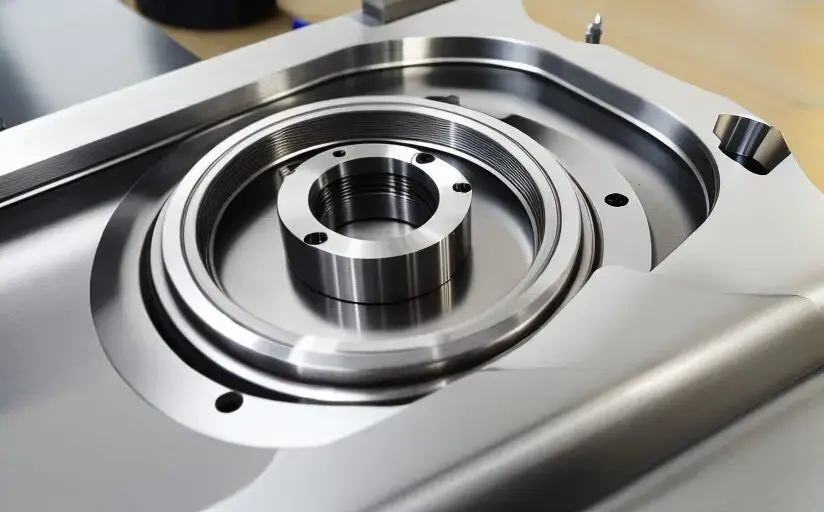
10.What are the disadvantages of stainless steel for machining?
Some factors of stainless steel may be disadvantageous for some users. These factors include:
- Stainless steel is expensive.
- It dents very easily.
- Many grades of stainless steel are prone to scratches.
What is the cheapest stainless steel for machining?
Type 409 is the cheapest grade of steel. Steels belonging to the ferritic family are generally cheaper. This is because these steels have a lower chromium content. Chromium is the main driver of steel cost.
